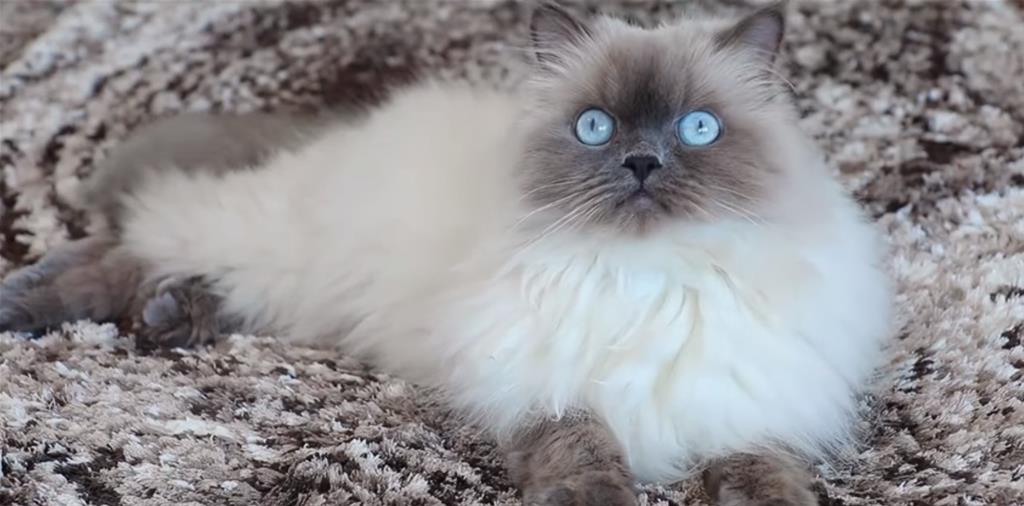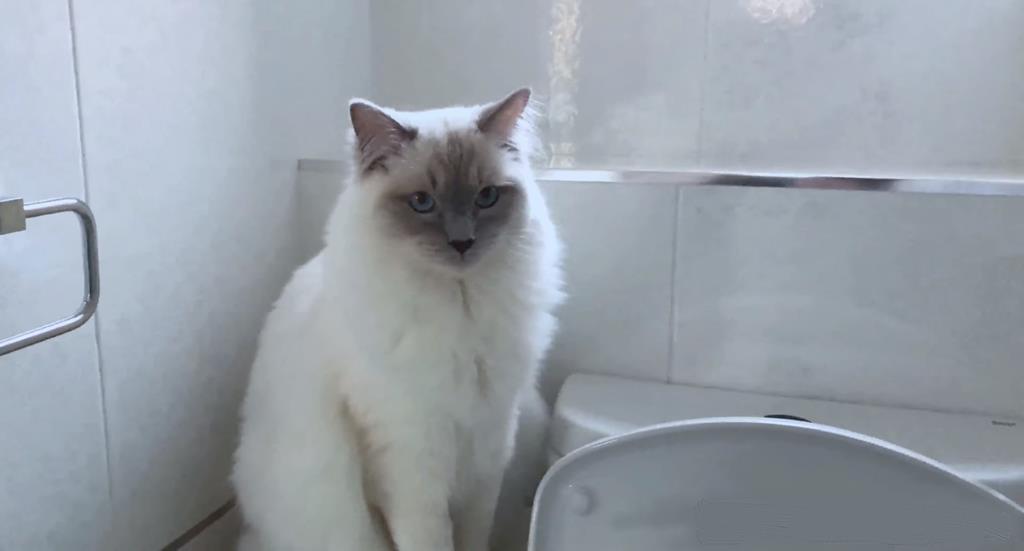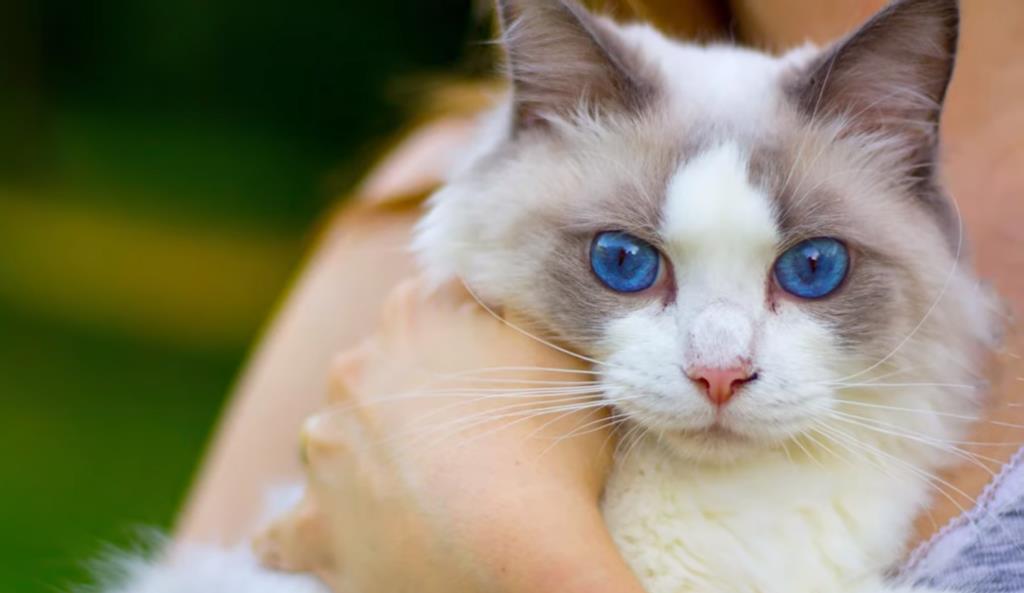Ragdoll cats are known for their striking appearance and gentle, affectionate nature. Training them to use the bathroom like humans might sound like a quirky idea, but it’s certainly possible with patience, consistency, and the right approach. While most cats are typically litter trained, some pet owners choose to train their cats to use the toilet as a way to minimize litter box odors and mess. In this article, we’ll guide you through the process of training your Ragdoll cat to pee in the bathroom.
Video Showing Toilet Trained Ragdoll Cat:
Bathroom Success: A Step-by-Step Guide to Training Your Ragdoll Cat
1. Understand Your Cat’s Personality
Before embarking on toilet training, it’s crucial to understand your Ragdoll cat’s personality. These cats are known for their calm and adaptable nature, which can work in your favor during training. However, some Ragdolls might be more resistant to change, so assessing your cat’s temperament will help you tailor your training approach.
2. Gather the Necessary Supplies
Toilet training your Ragdoll cat will require a few supplies:
- A training seat or toilet seat reducer designed for cats.
- Treats or rewards to motivate and reward your cat.
- Patience and consistent effort.
3. Gradual Introduction to the Bathroom
Start by gradually introducing your cat to the bathroom. Place the litter box next to the toilet so your cat associates the bathroom with the act of eliminating waste. Spend time in the bathroom with your cat, playing and offering treats to create a positive association.
4. Elevate the Litter Box
After your cat becomes comfortable with the bathroom environment, gradually elevate the litter box to a level that is closer to the height of the toilet seat. This step helps your cat get used to the idea of eliminating waste at an elevated level.
5. Transition to the Training Seat
Once your cat is comfortable with the elevated litter box, it’s time to introduce the training seat or toilet seat reducer. Place the training seat over the toilet seat and secure it in place. Ensure that your cat can comfortably step onto the training seat from the elevated litter box.

6. Gradual Adjustment
At this point, start gradually reducing the amount of litter in the training seat while maintaining the same familiar litter box texture. This step helps your cat become accustomed to eliminating waste directly into the training seat while still feeling a sense of familiarity.
7. Transition to No Litter
Over time, start reducing the amount of litter in the training seat until your cat is comfortable using it without any litter. At this stage, your cat is essentially using the toilet seat to eliminate waste. Continue to praise and reward your cat after each successful bathroom trip.
8. Use Flushable Litter
To ease the transition further, you can place a small amount of flushable litter in the training seat. This helps your cat associate the sensation of digging and covering waste with the toilet.
9. Gradual Removal of the Training Seat
Finally, once your cat is consistently using the training seat with flushable litter, you can begin gradually removing the training seat altogether. During this phase, your cat should be comfortable jumping directly onto the toilet seat.
10. Consistency and Positive Reinforcement
Throughout the entire training process, consistency is key. Ensure that you maintain a regular routine and provide positive reinforcement through treats, praise, and affection. Be patient, as some cats may progress faster than others. If accidents happen, remain patient and refrain from scolding your cat.

Is it OK to train your cat to use the toilet?
Yes, it is possible to train some cats to use the toilet instead of a litter box. This process is known as toilet training or “toilet training for cats.” However, it’s important to note that not all cats will take to this method, and it requires patience, positive reinforcement, and a gradual approach.
Here are some steps to consider if you want to toilet train your cat:
-
Gradual Introduction:
- Start by placing the litter box next to the toilet. Allow your cat to get used to this new location.
-
Elevate the Litter Box:
- Gradually elevate the litter box until it reaches the same level as the toilet. This helps your cat get accustomed to jumping onto a higher surface.
-
Transition to a Training Seat:
- Replace the regular litter box with a training seat that fits over the toilet bowl. The training seat has a hole in the center, allowing the cat to balance on the seat.
-
Reduce Litter Gradually:
- Over time, reduce the amount of litter in the training seat, so your cat becomes more comfortable with the feel of the toilet surface.
-
Remove the Training Seat:
- Once your cat is comfortable using the training seat without litter, you can remove the seat altogether. Your cat will now be using the toilet directly.
-
Use Positive Reinforcement:
- Offer plenty of positive reinforcement, such as treats and praise, whenever your cat successfully uses the toilet.
It’s important to mention that toilet training may not be suitable for all cats. Some cats may not adapt well to the change, and others may find it stressful. Additionally, elderly cats or cats with physical limitations may not be good candidates for toilet training.
Always be patient and attentive to your cat’s comfort and well-being during the training process. If your cat shows signs of stress or refuses to use the toilet, it’s best to revert to the litter box and reassess whether toilet training is the right choice for your feline companion.
Can Ragdolls be potty trained?

Ragdoll cats, like many other cat breeds, can be trained to use a litter box for their bathroom needs. Most cats have a natural instinct to bury their waste, making them generally receptive to using a litter box. Here are some tips for potty training your Ragdoll:
-
Provide a Litter Box:
- Place a clean and accessible litter box in a quiet and easily reachable location. Make sure it’s large enough for your Ragdoll to comfortably turn around in.
-
Choose the Right Litter:
- Cats often have preferences for the type of litter they use. Experiment with different textures and materials to see what your Ragdoll prefers.
-
Maintain a Clean Litter Box:
- Cats are more likely to use a clean litter box. Scoop the box daily and change the litter regularly to ensure a pleasant environment for your cat.
-
Positive Reinforcement:
- When your Ragdoll uses the litter box, provide positive reinforcement such as praise, treats, or gentle petting. This helps them associate the behavior with a positive outcome.
-
Avoid Punishment:
- If accidents happen outside the litter box, avoid punishing your cat. Negative reinforcement can create anxiety and fear, making the training process more difficult.
-
Consistency is Key:
- Stick to a consistent feeding schedule and take your Ragdoll to the litter box after meals. Cats often feel the need to eliminate after eating.
-
Monitor Health:
- If your Ragdoll suddenly starts avoiding the litter box or shows other changes in behavior, it could be a sign of a health issue. Consult with your veterinarian if you have concerns.
Remember that individual cats may have different preferences, so be patient and willing to adapt your approach based on your Ragdoll’s behavior. Potty training is a gradual process, and positive reinforcement goes a long way in encouraging the desired behavior.
Why does my Ragdoll cat keep peeing in the house?
If your Ragdoll cat is consistently peeing outside the litter box, there could be various reasons behind this behavior. It’s essential to identify and address the underlying cause. Here are some common reasons why a cat might exhibit inappropriate urination:
-
Health Issues:
- Urinary tract infections, bladder stones, or other medical conditions can cause discomfort and lead to inappropriate urination. If your cat is exhibiting this behavior, consult with a veterinarian to rule out any health issues.
-
Litter Box Issues:
- The litter box may not be to your cat’s liking. Cats can be picky about the type of litter, cleanliness, and location of the box. Ensure the litter box is clean, and try experimenting with different types of litter.
-
Stress or Anxiety:
- Changes in the environment, such as moving to a new home, the introduction of a new pet, or changes in the household routine, can cause stress for your cat. In response, they may start urinating inappropriately. Provide a safe and quiet space for your cat and try to minimize disruptions.
-
Territorial Marking:
- Unspayed or unneutered cats may engage in territorial marking, especially if they detect the presence of other cats. Spaying or neutering your cat can help reduce this behavior.
-
Dirty Litter Box:
- Cats are more likely to avoid a dirty litter box. Make sure to scoop the litter box daily and change the litter regularly.
-
Litter Box Size:
- Ensure that the litter box is large enough for your Ragdoll cat to comfortably turn around in. Some cats may avoid using a box that feels cramped.
-
Behavioral Issues:
- Behavioral problems, such as stress or boredom, can lead to inappropriate urination. Enrich your cat’s environment with toys, scratching posts, and interactive play.
-
Medical Issues:
- Diabetes, kidney disease, or other health problems can cause increased thirst and urination. If your cat is drinking more water than usual, consult a veterinarian.
If the issue persists or if you’re unsure about the cause, it’s crucial to seek professional advice from a veterinarian. They can perform a thorough examination and diagnostic tests to identify any underlying health issues. Once health concerns are ruled out, you can focus on addressing behavioral or environmental factors to help prevent inappropriate urination.
Conclusion
Training your Ragdoll cat to use the bathroom can be a rewarding endeavor, but it requires dedication, patience, and a deep understanding of your cat’s individual temperament. Remember that not all cats will take to this training method, and it’s important to respect your cat’s preferences. If your Ragdoll shows signs of stress or discomfort, it’s okay to revert to traditional litter box usage. Ultimately, the goal is to create a positive and stress-free experience for both you and your feline companion.



